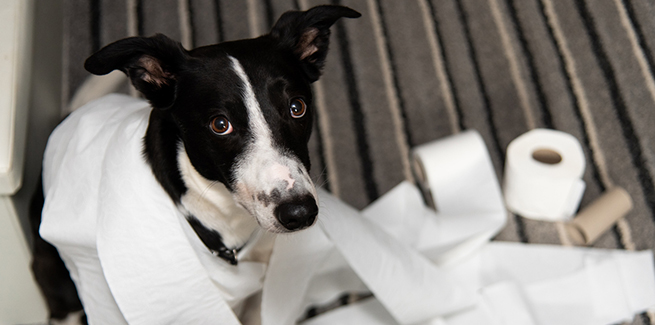As people return to work, those who adopted a dog during the pandemic could be in for a rude surprise

People are preparing to go back to work, but their new pets most likely won’t be going with them. And those who adopted a pet during lockdown could be in for a rude surprise once they get home.
While the number of pandemic-inspired pet adoptions may be less than media reports suggest, there are still a lot of new pet owners out there whose pets have never known anything but 24/7 attention from their owners.
And those new best friends who kept their owners from going crazy during lockdown are going to be faced with a lot of unfamiliar alone time.
That could mean problems.
“I think we’re being a little naive to think we can spend 24/7 for [several months] with these guys and then abruptly leave,” says Leslie Sinn, DVM, DACVB, CPDT-KA, a certified veterinary behaviorist and owner of Behavior Solutions for Pets, a consulting firm in Hamilton, Virginia.
Does that mean Sinn is expecting a huge wave of unpleasantly surprised pet owners? “Truthfully, yes,” she says.
Sinn told NEWStat that the primary issue is going to be separation anxiety. “With these dogs being used to having that social support and that social contact, and now being left basically alone under house arrest, I think that’s going to be rough for some of them.”
Sinn doesn’t blame this plethora of new pet owners for not expecting anxiety issues when the time comes to go back to work. “I don’t know that people are aware of [separation anxiety] as a problem in dogs and cats. So there’s been no reason for them to anticipate it [or] to take any particular steps.”
But Sinn says there are steps veterinarians can take to help their new patients and clients prepare for it.
“Hopefully, veterinarians have been having conversations with new owners about appropriate socialization in general,” Sinn says. That includes “encouraging independence and encouraging exposure to as many different people, places, and things as has been physically possible during the pandemic.” She acknowledges that introducing pets to the wider world can be difficult, given the CDC’s recent recommendations on social distancing pets, but stresses its importance.
The most important thing, she says, is “accustoming the pet to some period of time alone.”
For example: “In the past, if I had to run an errand, I’d take my dog with me when I left the house because it was a chance to spend more time with him,” Sinn says. But that’s the opposite of what you want to be doing during lockdown. “Now, when I go out for my [semimonthly] grocery run, I make a point of leaving the dog behind.” This allows for some much-needed separation between owner and pet, and gives the pet a chance to practice being alone.
Owners should avoid taking their dogs with them every single place they go, Sinn says. That way, it’s not such a shock when they have to leave for work.
Sinn says veterinarians can make these basic recommendations to owners to practice the healthy separation behaviors we want dogs to acquire while there’s still time: “The ability to be alone, the ability to be independent, the ability to settle without us having to encourage them to settle,” Sinn says. “Those are all things a new pet owner should be doing on a regular basis.”
Sinn adds that veterinarians who haven’t had this conversation with their clients yet should have it sooner rather than later.
“[Because] one way or another they will be having the conversation,” Sinn says. And if they’re having it later, then “it’s going to be a disaster-mitigation conversation versus a preventive conversation.”
Photo credit: © iStock/steved_np3



